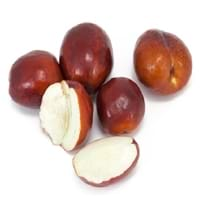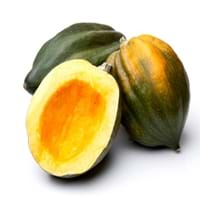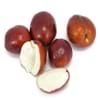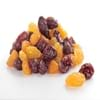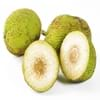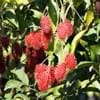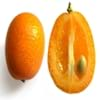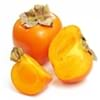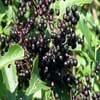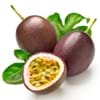Health Benefits
Cancer prevention, Diarrhea treatment, Improves muscular strength, Liver health, Maintains hormonal balance, Reduces nervous tension, Reduces blood circulation problems, Reduces stress, Regulation of heart rate, Treatment of hysteria
Anti-inflammatory properties, Arthritis treatment, Regulates Blood Sugar
General Benefits
Anti oxidant properties, Digestive aid, Flu treatment, Helps in weight loss, Strengthens bones, Treatment of common cold
Boosts immune system, Controls blood sugar levels, Digestive aid
Skin Benefits
Heals sunburn, Hydrates skin, Reduces wrinkles, Skin rejuvenation, Skin revitalization
Nourishes skin, Protects skin from oxidative stress
Hair Benefits
Promotes longer and healthier hair, Protects hair
Prevents hair loss, Promotes longer and healthier hair, Regulates hair growth
Allergy Symptoms
Abdominal pains, Breathing difficulty, Diarrhea, Hives, Itching in eyes, Itching of nose, Nasal congestion, Redness of eyes, Runny nose, Sneezing, Wheezing
Asthma, Red rash, Swelling of mouth, tongue or lips
Side Effects
Decrease in blood sugar levels, Intense headache
Diarrhoea, Vomiting
Lactating Women
Not Available
Yes
Best Time to Eat
As a snack in the late afternoon, Don't consume at night and before bed, Morning time (before lunch), Strictly avoid empty stomach
Along with meal, As a snack in the late afternoon, Don't eat after meal, Eat the fresh ones, avoid mixing with any other foods, don't eat after meal.
Vitamin B5 (Pantothenic Acid)
Not Available
Vitamin B9 (Folic acid)
Not Available
Vitamin C (Ascorbic Acid)
Calories in Fresh Fruit with Peel
Calories in Fresh Fruit without Peel
Not Available
Not Available
Calories in Frozen Form
Not Available
Calories in Canned Form
Not Available
Calories in Juice
Not Available
Calories in Jam
Not Available
Calories in Pie
Not Available
Season
Autumn, Summer
Winter
Varieties
Honey Jar, Sugar Cane, Li, Shanxi Li, Sherwood, Chico, Silverhill, Tigertooth, Winter Delight and Lang
Bush Table Queen, Heirloom Table Queen, Festival Hybrid, Early Acorn Hybrid, Table Ace, Ebony and Cream of the Crop
Color
Green, Red, Yellow
Dark green, Green-yellow, Orange green
Inside Color
White
Yellow
Origin
Syria
Central America, North America, Unknown
Soil Type
Sandy, Well-drained
Well-drained
Climatic Conditions
Warm to hot climate
Cold, Sunny
Facts about
- Pigment extracted from Indian jujube is used for silk dyeing in Burma.
- In Korea, jujube wood is used to make wind instrument taepyeongso.
- Fresh jujube is known as Chinese apple & dried form is called as Chinese date.
- It was named as Acorn Squash for its resemblance to a large ribbed acorn.
- It is said that squash was being grown in Mexico as long as 10,000 years ago.
- It was the first food cultivated by native American Indians.
Other Countries
Bangladesh, India, Iran, Korea, Lebanon, Pakistan
Egypt, India, Iran, Italy, Mexico, Russia, Turkey, Ukraine, United States of America
Top Importer
United States of America
Costa Rica
Top Exporter
China
United States of America
Botanical Name
Ziziphus zizyphus
Cucurbita Pepo
Synonym
Ziziphus jujuba or Ziziphus mauritania or Zizyphus jujuba
Winter Squash
Subkingdom
Tracheobionta
Tracheobionta
Division
Magnoliophyta
Magnoliophyta
Class
Magnoliopsida
Magnoliopsida
Subclass
Rosidae
Dillenhidae
Order
Rosales
Cucurbitales
Family
Rhamnaceae
Cucurbitaceae
Generic Group
Not Available
Not Available
Difference Between Jujube and Acorn squash
We might think that Jujube and Acorn squash are similar with respect to nutritional value and health benefits. But the nutrient content of both fruits is different. Jujube and Acorn squash Facts such as their taste, shape, color, and size are also distinct. The difference between Jujube and Acorn squash is explained here.
The amount of calories in 100 gm of fresh Jujube and Acorn squash with peel is 79.00 kcal and 40.00 kcal and the amount of calories without peel is Not Available and Not Available respectively. Thus, Jujube and Acorn squash belong to High Calorie Fruits and Low Calorie Fruits category.These fruits might or might not differ with respect to their scientific classification. The order of Jujube and Acorn squash is Rosales and Cucurbitales respectively. Jujube belongs to Rhamnaceae family and Acorn squash belongs to Cucurbitaceae family. Jujube belongs to Ziziphus genus of Z. zizyphus species and Acorn squash belongs to Cucurbita genus of Pepo species. Beings plants, both fruits belong to Plantae Kingdom.
